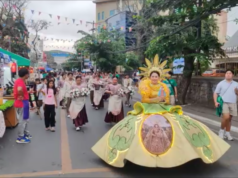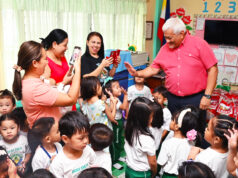ACCORDING TO the latest report from the Bureau of Maintenance of the Department of Public Works and Highways, the combined effects of super Typhoon Egay and Typhoon Falcon have left almost P7 billion worth of damages in infrastructures throughout the nation. This includes damage to roads and highways at P1.17 billion, P162.6 million for bridges, and P5.60 billion for flood-control structures.
On the other hand, the damage on agriculture has been pegged already at P2.75 billion. The onslaught of Egay has affected over 117,033 farmers and fisher folks all over the country, with more than 143,429 hectares of crop area heavily destroyed.
While flood waters have continued to subside over the weekend, we expect more data on the number of casualties, displaced families and missing persons to come in from the National Disaster Risk Reduction and Management Council.
For most of us Kapampangans, life goes on as we go back to our regular grind, trying the hardest to return to even a semblance of normalcy in our daily existence.
At the height of the flood in my hometown, my siblings and I were already contemplating on the renovation of our house, particularly the embankment and elevation of the first floor, which was flooded after 21 long years. One of my sisters suggested that we relocate somewhere else instead, citing the absence of a long-term plan from both the local and national governments regarding the annual flooding in the province.
Our eldest sibling was not totally supportive of the idea saying that leaving the place which has been our home for as long as we could remember was simply difficult to process. The idea of relocating to a new place and starting all over again was just overwhelming for all of us.
Many might be quick to remind me that change is the only thing constant in this world. I agree; but when it comes to this particular decision, it is really easier said than done. Our attachment to the place where we were born, raised, and made all the many memories that made us the persons that we are now is something that goes beyond familiarity. It may be simple for a newly-married couple to start a family in a new place, or for a fresh graduate to plunge into an overseas career. But at our age, it is both saddening and frightening.
This must be how many of my cabalens felt when they left their homes simply because they have grown tired and frustrated of elevating and renovating their houses year after year, only for the annual floods to catch up the next year.
A few months back, I was going around the poblacion area and noticed that I was no longer familiar with the houses and structures that used to define and give a certain character to the place. I am not even talking about the new buildings; I was looking for the ancestral houses, the landmark structures that were silent witnesses to our colorful history. Either they have been demolished, restructured totally, or abandoned to eventual deterioration.
I also visited the public elementary school where I graduated. While I was amazed by the new three-storey buildings and covered court, I was saddened not to find any trace of the school that is vividly pictured in my mind. The Gabaldon building was in a very sorry state, our classroom has long been gone, and the award-winning Math and Science Garden and the spacious gardening area have been totally submerged in flood water for many years.
Call me a sentimental idiot, and I would not be in the least affected. But I think there are some things in life that we hold on to that we cannot simply let go. We have our family, our true friends and yes, our houses. To some, the house may just be structure that can be replaced anytime. But to many of us, it is our home, our haven, and our sanctuary.





